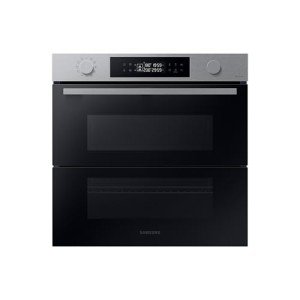The Rise of Built-In Ovens: A Seamless Approach to Modern Cooking
In contemporary kitchens, where design looks blend flawlessly with functionality, one home appliance stands apart as a true game changer: the built-in oven. As property owners and chefs alike continue to seek innovative services that enhance their cooking experience, built-in ovens have actually become increasingly popular. This short article explores the advantages, factors to consider, and patterns surrounding built-in ovens, highlighting why they are a necessary function in contemporary cooking areas.
What is a Built-In Oven?
A built-in oven is a kitchen area appliance developed to be integrated into the cabinets of a kitchen rather than standing alone. Unlike conventional freestanding ovens, which can be moved and positioned anywhere, built-in ovens can be found in numerous designs and sizes to fit particularly within designated areas. Offered in single or double setups, these ovens offer a structured appearance that complements contemporary kitchen designs.
Advantages of Built-In Ovens
1. Space-Saving Design
One of the most appealing benefits of built-in ovens is their space-saving style. By integrating the oven into cabinets, you can maximize valuable counter and floor space. This is particularly beneficial in smaller sized kitchen areas, where maximizing room is necessary. Built-in ovens can be installed at eye level, making them more accessible and decreasing the requirement to flex down.
2. Visual Appeal
Built-in ovens contribute to a sleek and cohesive kitchen style. Available in different finishes-- such as stainless steel, black, white, and customized kitchen cabinetry-- they can blend flawlessly into the overall design. This visual appeal enhances the cooking area's visual consistency and raises the space, producing a contemporary and sophisticated environment.
3. Improved Functionality
Many built-in ovens come geared up with advanced cooking innovations, such as convection cooking, steam ovens, and wise features. These enhancements allow for flexible cooking options, making it simpler to achieve professional-level results in your home. Smart built-in ovens can even link to Wi-Fi, allowing users to manage the oven remotely, get notifications, and gain access to a range of cooking programs and recipes.
4. Enhanced Ventilation
Due to the fact that built-in ovens can be integrated with kitchen area hoods and ventilation systems, they can help keep much better air quality and lower cooking odors. This is particularly considerable for those who love to cook with fragrant spices and active ingredients, as an effective ventilation system can keep the kitchen area comfy and inviting.
5. Customization Options
Built-in ovens provide a vast array of customization options to suit private cooking designs and needs. From professional-grade home appliances with several cooking modes to compact styles for smaller kitchen areas, property owners can select the oven that fits their specific requirements. Many producers also offer adjustable front panels, permitting you to match the oven's look to your cabinetry for a really merged look.
Considerations When Choosing a Built-In Oven
While built-in ovens have lots of advantages, there are necessary factors to consider to keep in mind before buying:
1. buy built in oven -in ovens usually include a greater price than their freestanding equivalents due to their style and installation requirements. It's important to consider both the cost of the oven and any extra expenditures related to cabinetry adjustments or setup.
2. Installation Requirements
Installing a built-in oven often requires expert support, especially if you require to modify existing cabinetry. Guarantee that you think about any costs connected with installation, consisting of labor and potential kitchen cabinetry modifications.
3. Size and Dimensions
Before buying a built-in oven, determine the designated area precisely to make sure an appropriate fit. Built-in ovens can be found in different sizes and configurations, so selecting one that aligns with your needs and kitchen area style is vital.
4. Way of life and Usage
Consider your cooking practices and needs when choosing a built-in oven. If you regularly host large events, a double oven may be more advantageous. On the other hand, if you have a compact cooking area, a single-wall oven might be enough.
Trends in Built-In Ovens
The kitchen device market is continually evolving, and built-in ovens are not exempt from emerging trends. Some current trends include:
Smart Technology Integration: With the rise of wise home technology, built-in ovens now typically include connection alternatives. This enables users to keep an eye on cooking progress and change settings via mobile apps.
Energy Efficiency: As sustainability ends up being a priority, lots of manufacturers are investing in energy-efficient built-in ovens that lower energy consumption while keeping efficiency.
Multi-functional Designs: Built-in ovens now provide functions such as air frying, sluggish cooking, and steaming, offering flexibility that satisfies a large range of cooking techniques.
Conclusion

Built-in ovens certainly represent an ideal blend of design, function, and benefit in today's cooking areas. As more property owners choose this contemporary service, the focus shifts to producing a cooking area that is as visually pleasing as it is useful. Whether you are constructing a new home or redesigning your kitchen, considering a built-in oven could raise your culinary experience and transform your kitchen area into a stylish and practical sanctuary. With a variety of choices offered and continuous innovations in technology, built-in ovens stay a standout option for both newbie cooks and culinary enthusiasts alike.
